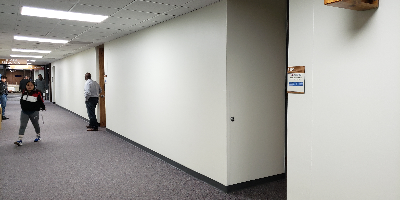dec 1, 1863 - Making Wyandott a railroad terminal
Description:
(Photo: The Union Pacific Railway Eastern Division Seminole later assigned No. 21 had elaborate lettering and bright colors. It was built by the Rogers Locomotive Company in 1867 This was one of the first four engines brought to Wyandotte for hauling passengers and freight west. Nebraska State Historical Society)In 1863 John D. Perry and Thomas Durant financially back Samuel Hallett’s goal of making Wyandott a new railroad terminal. Thomas Ewing Jr. had regained control of the UPRW-ED by default since the rail line was not completed to Lawrence in two years, but as the new Chief Justice of Kansas, he had lost his impetus for railroading and agreed to have Samuel Hallett’s Company take over the UPRW-ED (Petrowski, p. 77). Hallett seized the opportunity to move ahead with his vision of a competing transcontinental railroad by forming a business alliance with John D. Perry (1815-1895), a wealthy St. Louis banker from Virginia who found the plan appealing because it meant St. Louis would compete with Chicago for business headed to Philadelphia and Europe. Thomas Durant (1820-1855), a physician, businessman and financier from Massachusetts, also entered the deal with Samuel Hallett at one-third overall stock ownership (Petrowski, p. 90). Now there were three principle promoters and owners of the UPRW-ED: Samuel Hallett, John Perry and Thomas Durant. It was in this way financially that Wyandotte County would become an integral railroad hub, since it was at the doorstep of Kansas City, Missouri situated on the confluence of the Kaw and Missouri Rivers.
In 1864 The Pacific Railway Act specified Thomas Durant as the new President of the Union Pacific Railroad and the Union Pacific Railway Eastern Division. Durant was given responsibility for managing all decisions involving the Transcontinental Railroad by President Andrew Johnson (Petrowski, p. 90). The 1864 Act elicited more rigorous standards for the quality of the road bed, rail, and bridges. Durant noted that bribery was not necessary to secure legislation that detailed appropriate valuation to newly issued joint government-railroad bonds. By being transparent Durant sought to avoid the embarrassing legal entanglements that had plagued the LP&W RW. Durant even tried to satisfy the old LP&W RW certificates of stock that Ewing had issued at 10-50% of face value, and to pay off all debts, but there were new conflicts with Hallett and Perry. Specifically, there was a wolf in the chicken coop. Durant viewed the UPRW-ED as a subsidiary branch of the Union Pacific Railroad but Hallett and Perry viewed it as a separate competing railroad. An amendment to the act in July 1864 stipulated the first railroad to arrive at the 100th meridian would receive the right of way to meet the Central Pacific (Collins, 14).
Added to timeline:
Date:
dec 1, 1863
Now
~ 162 years ago
